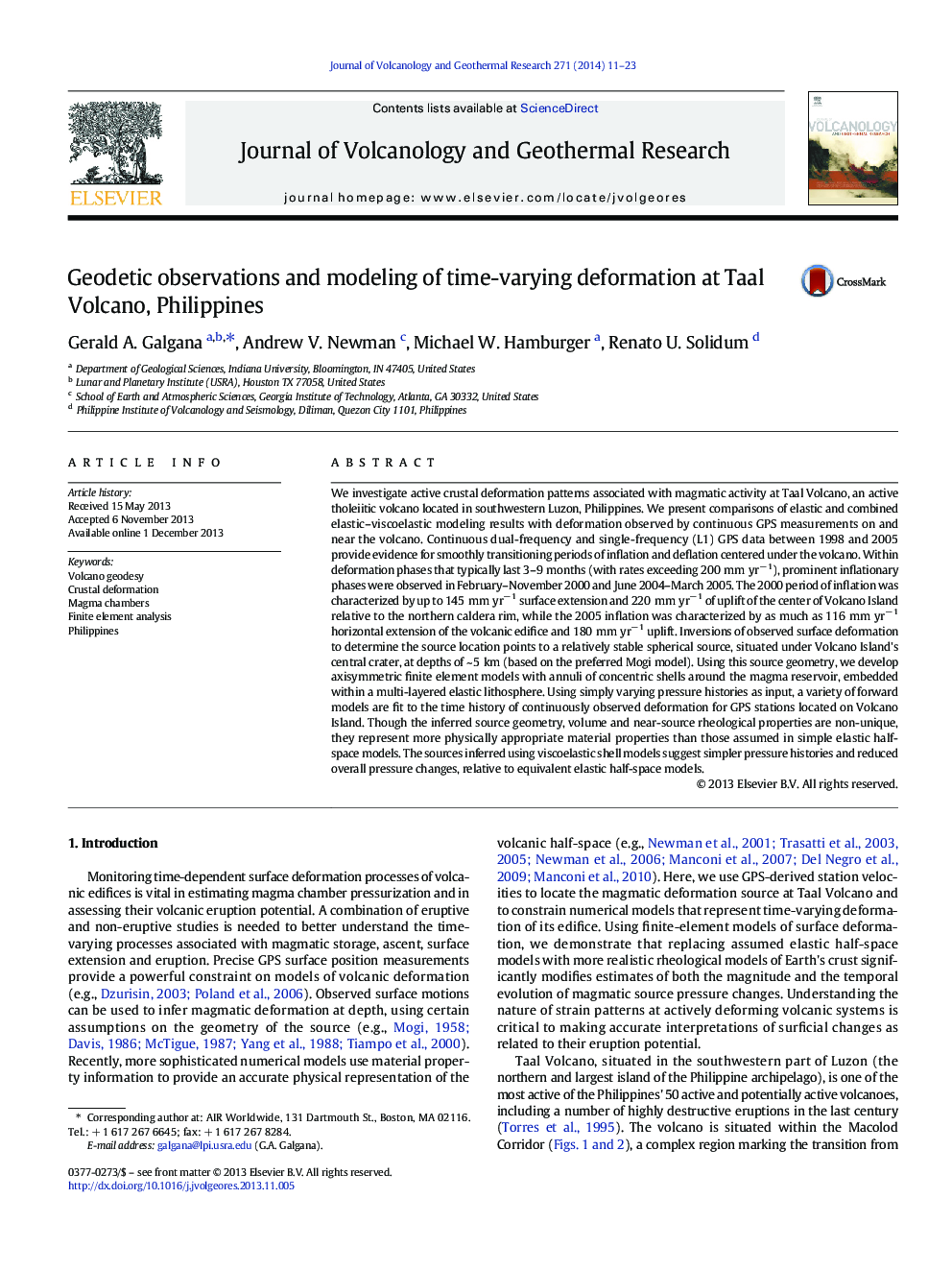| Article ID | Journal | Published Year | Pages | File Type |
|---|---|---|---|---|
| 4712422 | Journal of Volcanology and Geothermal Research | 2014 | 13 Pages |
•GPS reveals major inflationary patterns at Taal Volcano in 2000 and 2005.•Both inflationary sources Taal Volcano are found to be about 5 km underneath the main volcano crater.•Finite element models link pressurization trends at depth to surface deformation;.•Surface deformation patterns could result from delayed viscoelastic response, rather than from new magma influx.
We investigate active crustal deformation patterns associated with magmatic activity at Taal Volcano, an active tholeiitic volcano located in southwestern Luzon, Philippines. We present comparisons of elastic and combined elastic–viscoelastic modeling results with deformation observed by continuous GPS measurements on and near the volcano. Continuous dual-frequency and single-frequency (L1) GPS data between 1998 and 2005 provide evidence for smoothly transitioning periods of inflation and deflation centered under the volcano. Within deformation phases that typically last 3–9 months (with rates exceeding 200 mm yr− 1), prominent inflationary phases were observed in February–November 2000 and June 2004–March 2005. The 2000 period of inflation was characterized by up to 145 mm yr− 1 surface extension and 220 mm yr− 1 of uplift of the center of Volcano Island relative to the northern caldera rim, while the 2005 inflation was characterized by as much as 116 mm yr− 1 horizontal extension of the volcanic edifice and 180 mm yr− 1 uplift. Inversions of observed surface deformation to determine the source location points to a relatively stable spherical source, situated under Volcano Island's central crater, at depths of ~ 5 km (based on the preferred Mogi model). Using this source geometry, we develop axisymmetric finite element models with annuli of concentric shells around the magma reservoir, embedded within a multi-layered elastic lithosphere. Using simply varying pressure histories as input, a variety of forward models are fit to the time history of continuously observed deformation for GPS stations located on Volcano Island. Though the inferred source geometry, volume and near-source rheological properties are non-unique, they represent more physically appropriate material properties than those assumed in simple elastic half-space models. The sources inferred using viscoelastic shell models suggest simpler pressure histories and reduced overall pressure changes, relative to equivalent elastic half-space models.
